| Name of Event | Gregorian Date | Solar Hijri Date |
| Nowruz | March 21 | Farvardin 1 |
| Sizdah-Bedar | April 2 | Farvardin 13 |
| Yalda Night | December 22 | Azar 30 |
| Chaharshanbe Suri | March 15 | Esfand 23 |
| Tasua and Ashura | August 7 and 8 | Mordad 16 and 17 |
| Ramadan | April 2 | Farvardin 14 |
| Eid Al-Fitr | May 2 | Ordibehesht 13 |
| Eid Al-Qadeer | July 18 | Tir 27 |
| Christmas | December 25 | Dey 4 |
| Valentine’s Day | February 14 | Bahman 25 |
| Anniversary of Islamic Revolution Victory of Iran | February 11 | Bahman 22 |
| Oil Nationalization Day | March 20 | Esfand 29 |
Iranian holidays are divided into four main categories: national holidays, Islamic holidays, Christmas holidays, and primary and distinctive Persian holidays. Events here refer to the well-known holidays listed in Iranian calendars. It is also crucial to note that although though these days are considered off in Iran, they are peak season, which means that all of the hotels and stores are open. We will now discuss these Persian holidays in more depth. These unique occasions are as follows:
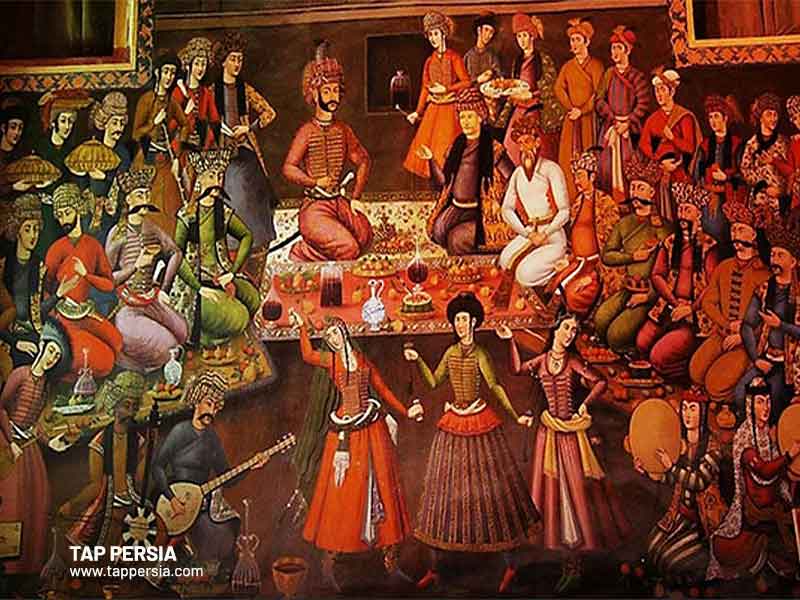
Ancient Persian Events in Iran
Persian culture, which dates back thousands of years, is renowned for its rich diversity and many Persian holidays. These celebrations have their origins in Zoroastrianism, which dates back as far as the second millennium BC and maybe much earlier. All around the nation, traditional Persian festivities are being practiced in full vigor. Some of the most significant Persian holidays are listed below:
Nowruz (March 21st)
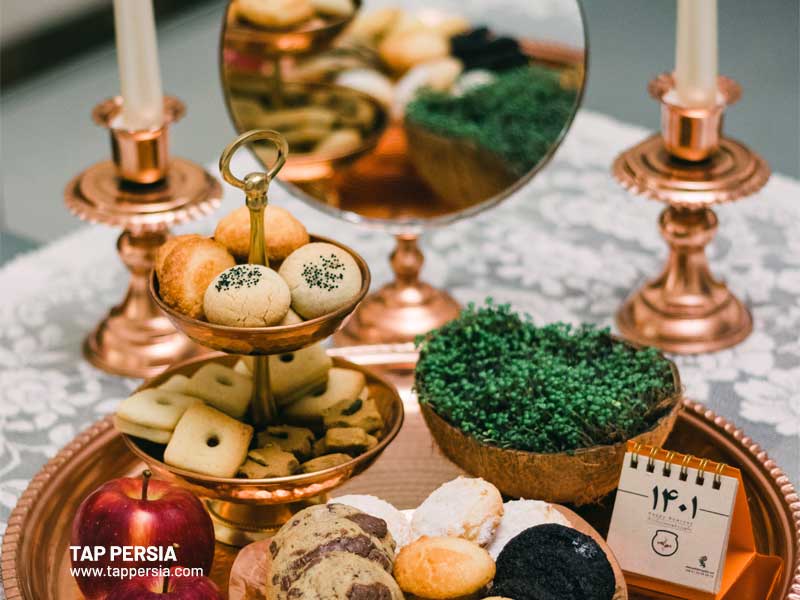
Today, Iranians and some of their neighbors in the region celebrate Nowruz, one of the oldest Persian holidays! Legendary accounts link the Nowruz holiday to Jamshid, the fourth ruler in Ferdowsi’s Shahnameh. This urban legend originated in the Indo-Iranian period! The ancient Iranian literature, Avesta, also refers to Jamshid as “Yima.” This narrative claims that Jam had a goddess who, on Ahura Mazda’s orders, launched a battle against the devil that resulted in hunger and drought. However, after the devil is destroyed, those people experience happiness and blessings once more, which keeps every tree green.
People commemorate this wonderful day by planting trees and refer to it as “No-Ruz,” which means “New Year” or “New Day.” Nowruz has five days of official Persian holidays, but for those who attend school (teachers and students), these vacation days extend to 13 to 17 days.
Sizdah-Bedar (April 2nd)
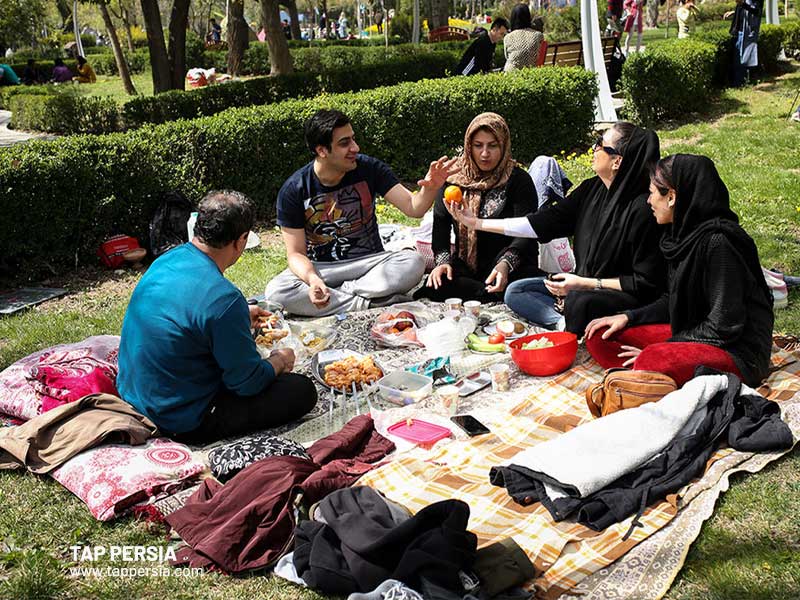
A joyful finish is required for Nowruz’s grand celebration to be complete. People thus venture outside on the final day of this holiday to honor the Sizdah Bedar custom and create the greatest Nowruz memories. A picnic in the great outdoors with friends is one of Sizdah Bedar‘s traditions, as is tying a knot with some grass to make wishes come true.
Families picnicking are a common sight, and this day is especially beloved in each community. You get the chance to spend beautiful moments with your loved ones from dawn to evening, ending the Nowruz celebrations.
The official calendar of Iran recognizes this Persian holiday as Nature Day and qualifies as one of the national holidays. To have fun together, people leave their houses.
The phrase “Sizdah Bedar,” which most people mistakenly think means “to eliminate the thirteenth’s omen,” really means “valley,” according to Persian dictionaries. So 13 Bedar means we visit the valley on the thirteenth!
Tying grass into a knot is among Sizdah Bedar’s most well-known customs. Iranians have a long-standing tradition of tying a certain vegetable after making a wish during this Persian holiday. People think that by figuring out the greens, they may fulfill their dreams and get rid of their issues.
One of the most significant subjects among the goals and aspirations is the riches of young girls and boys. The girls giggle, “Sizdah Bedar, another year, with a baby and a husband,” as they knit grass in the hopes of finding a good bride on this day.
Asar al-Baqie by Abureyhan Biruni, the Sunni Book of Moluk-el-Arz and Anbia by Hamzeh Esfahani, and the Avesta from the Zoroastrian Bible are all texts that originate from the Kiomars era (the first man on the earth from Persian mythological point of view).According to folklore, Mashie and Mashiane, a girl and a boy, were the bride and groom in the first union. They clasped hands and knotted a grass branch together as a symbol. Then, to alter the practice of marriage throughout history, the ancient Iranians did the same.
Yalda Night (December 20th)
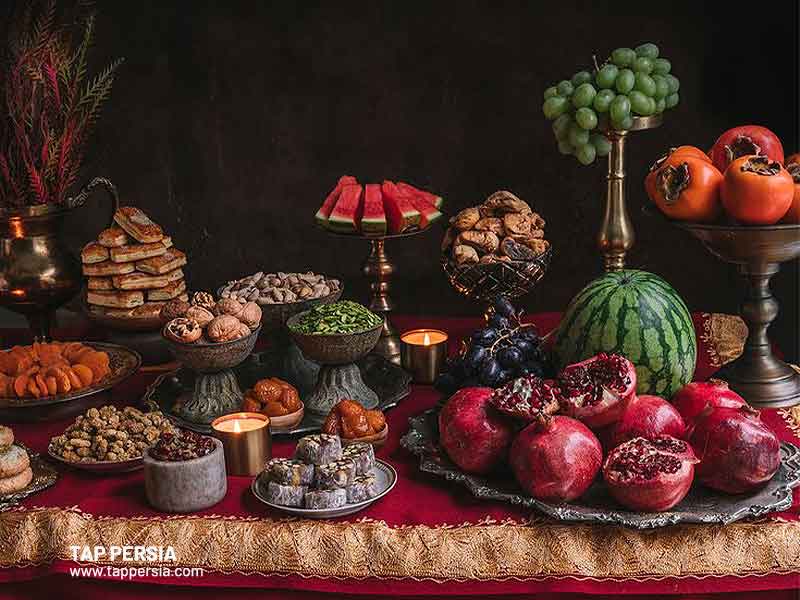
Despite being frequently observed now, Yalda Night (Shabe Yalda)t was one of the most important nights in ancient Iran. The importance of Yalda Night and the day on which it appeared in the official Persian calendar would require a lengthy explanation if we were to share it with you.
The first Dariush on the recognized Persian calendar appears to be when this old festival initially began, though. It is a long-standing practice in Iran to celebrate holidays and engage in nightlife during this particular night. They still have a significant role in Iranian young people’s lifestyles today despite time passing; they have not lost any of their significance.
Shabe Chelle is a different term for Yalda, which implies birth. When the last day of fall, December 20, comes to an end and the first day of winter, December 21, dawns, it is referred to as Yalda. Iranian households typically prepare substantial banquets on Yalda Night.
Additionally, a variety of fruits are served, the most popular of which is big watermelon. Other prevalent customs of this old Persian holiday include eating food, sharing stories from the elders with the younger generation and other family members, and praising the Hafez Divan.
Experience the richness of Iranian culture through its fall festivities and traditions. If you’d like to know more about it, go to this page and read about it.
Chaharshanbe Suri (March)
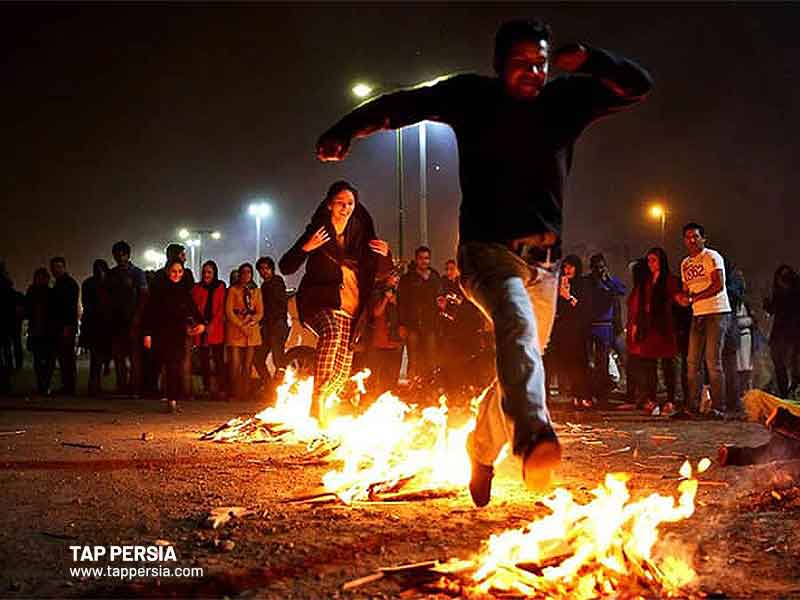
On the final Wednesday night of the year, one of the customary Iranian rites known as Chaharshanbe Suri is performed. On the final Wednesday of the year, Iranians kindle a fire and leap over it to greet spring. The exact date of this Persian holiday is unknown. The past year’s pus and filth should not be transferred to Nowruz, according to ancient Iranians. The New Year ought to begin fresh. To eliminate these toxins from their daily lives, there were not even enough water supplies available. They, therefore, utilized the element of fire. They burnt firewood to get rid of unnecessary items and clean their homes since they believed that the light was a representation of cleanliness.
Because the event was held on the final Wednesday of the year, the tragic Wednesday that followed was significant for ancient Iranians. This ceremony persisted with the introduction of Islam. Because setting anything on fire in Islam is necessary to totally eradicate impurities and because fire is a part of Islam’s concept of cleanliness. The Arabs, on the other hand, thought Wednesday was an absurd day and burned it to the ground to rid it of its unpleasantness.
We are well aware that lighting a fire and spending the night by it is the Charshanbe Suri people’s most significant ritual. The ritual is typically carried out by family members, who then gather to have fun. In the past, a large fire was started in one of the city’s neighborhoods. Until dawn, the fire was still burning. Jumping over the fire while chanting “My yellow is yours; your red is mine” is one of the fundamental Charshanbe Suri rites. In actuality, it is a type of prayer in which the light is asked to provide happiness and warmth to individuals rather than to remove their illnesses, problems, and sufferings.
Islamic Events and Festivals
As a Shiite Muslim nation, Iran holds religious festivals with distinctive traditions in several regions of the country. Events related to Islam play a big part in this. According to the Arabic lunar calendar, these religious events are observed. These are some of the instances:
Tasua and Ashura
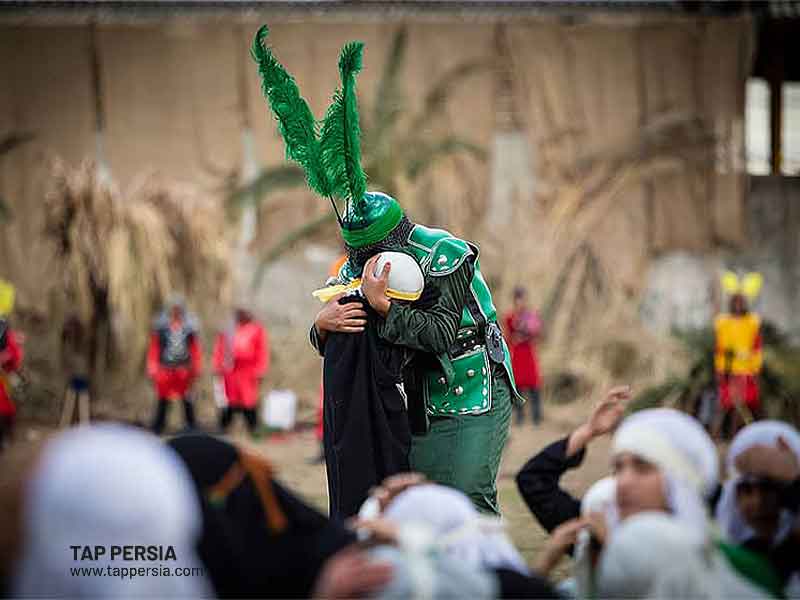
Muharram is the name of the first day of the Islamic calendar’s twelfth month (Hijri Qamari). The biggest tragedy and repression involving the Prophet’s family ever recorded in the history of the Islamic world occurred during one of the months that Muslims are barred from celebrating. In the past, Ashura has been one of the occasions that have garnered the most interest.
In addition to playing a significant role and having a significant social and historical influence, Ashura has evolved into a distinct culture. The Ashura incidents in 61 Hijri Qamari are what gave this day its notoriety among Shi’as. The important events of Karbala occurred on the ninth and tenth days of Muharram al-Haram. It has increased the prominence of these two days.
After this period, Imam Hussein, the third Shia Imam, and 72 of his companions were killed in Karbala during a battle with the Yazidi army while suffering from thirst. This sorrow is not only a regular grieving; it is also the most significant grief that occurs this month. In every region of the world, millions of people grieve his passing with diverse races. To perpetuate the remembrance of this terrible event, all ethnic groups in Iran, representing various traditions, edify Tasua and Ashura sorrow in their own unique ways without compromising particular rites.
On the official Iranian calendar, Tasua and Ashura by Hosseini are wrong by two days. Wearing black mourning attire and decorating mosques and other spaces with black flags are the first steps in this public grieving. Grief rituals are performed on various dates after Ashura and even to the conclusion of the Safar month. A few of the customs include candle-lit supper service to strangers in Mashhad, chaining, mournful song singing, and mass grieving. Each of these is lovely and unique in its own way. The cultural setting and social traditions influence how the services are delivered in different ways.
Ramadan
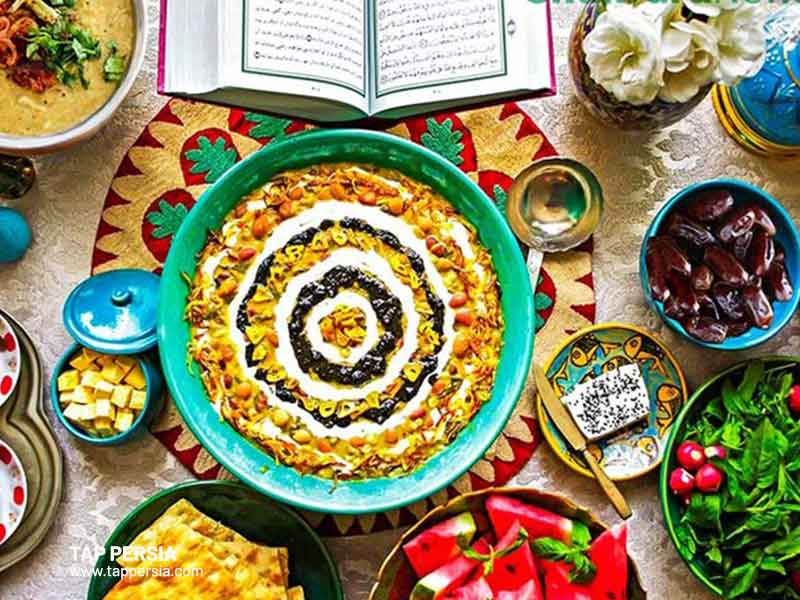
In the ninth month of Hijri Qamari, there is a religious celebration called Ramadan. Muslims all across the globe think the Holy Book (Qur’an) visited the Prophet during Ramadan. Muslims have a clear mandate to fast this month from the Quran. The Arabic term for Ramadan literally means “heat”. The greatest and most auspicious month in Islam is generally thought of as Ramadan. As well as being called God’s Party Month, this period. The night of Ghadr is one of Ramadan, which Muslims see as the most significant night of the year, hence it is worth mentioning(Ramedan In Iran).
Eid al-Fitr
Eid al-Fitr, one of the two most significant Islamic holidays, is mentioned in several hadiths and traditions. After the first day of Ramadan, the Muslims who observed a fast during which they forbade themselves from eating, drinking, and engaging in a variety of other activities, seek their recompense from God.
Due to the removal of fasting, eating, and drinking on this day, the first Shawwal lunar day is known as Eid al-Fitr. Fitr, which is Arabic for “eating and drinking,” is the last day of Ramadan when those who had been fasting begin to eat again after sunset.
Eid al-Qadeer
One of the biggest and most important Muslim holidays is Eid al-Qadeer. Along with Eid al-Qorban, this grand Eid is very significant to several groups in Iranian culture.
On the day of Eid al-Qadeer, people from various cities observe distinct traditions, which may include paying respects to Sadaat (the family members of the Prophet of Islam) and their ancestors. Families from the Sadaat community also get ready for the day in their houses. They offer their visitors presents on the day of Eid al-Qadeer that are regarded as blessings and that individuals keep to themselves.
Christian Events and Festivals
Iran has practiced Christianity since the early days of the faith before Islam ever emerged. Under Iran’s prior state religions, originally Zoroastrianism in ancient Persia, Sunni Islam in the Middle Ages following the Arab invasion, and Shia Islam since the Safavid conversion in the 15th century, the Christian faith has always made up a minority in that country. The following are two instances of Gregorian-based holidays observed in Iran:

Christmas in Iran
Christian celebrations of Christmas have been in Iran for a very long time before the advent of Islam. Christmas Eve is now merrier than ever among Iranian Armenians and Assyrians. Around 350000 descendants of Armenians and Assyrians made up a sizeable portion of the Christian population in this primarily Islamic nation, and they lived in quiet, modest neighborhoods in places like Tehran and Isfahan. Iran has long been considered the safest country in the Middle East because there, people respect Christians and their religion and join them in celebrating their joyous occasions.
Iranian Christians are either Assyrians who adhere to the Assyrian Church of East or Armenians who follows the Armenian Orthodox Church. While most Christians commemorate the Nativity on December 35, Armenians celebrate Christmas on January 6 together with Epiphany. The warmth and joy of this joyous occasion, however, pierce the winter’s chill in the last month of the year and suffuses practically everyone(Christmas in Iran).
Valentine’s Day

Much earlier before the actual holiday, anticipation for Valentine’s Day builds. Young Iranian couples like picking out the nicest present for their sweetheart. Consequently, several firms attempt to maximize this occasion. For typical Valentine’s Day presents like chocolate, flowers, or even jewelry, many of them have large deals.
However, every young couple that celebrates Valentine’s Day gives presents to each other. Iran offers a wide range of Valentine’s Day presents, from inexpensive items like jewelry and luxury automobiles to more expensive items like flowers and chocolate. But many also like giving Teddy Bears as gifts. It may be a tiny stuffed animal or an enormous toy.
The young people of contemporary Iran like being current on world affairs. Most of them participate in western holidays like Christmas and Valentine’s Day. Maybe this event seems extravagant and out of the ordinary to some people, including Iranian parents. However, it does not prohibit the young Iranian generation not to be delighted about this day.
Some have attempted to replace Valentine’s Day in recent years with an old celebration called Sepandar Mazgan due to the present Iranian generation’s interest in that holiday. They declared it to be “Iranian Love Day.” Many people welcomed this change, but it was also a reason for some others to extend the day of love celebrations.
National Holidays in Iran
The Iranian revolution gave rise to several Persian holidays:
Anniversary of Islamic Revolution Victory of Iran (February 11th)
On Bahman 22, 1357, the Islamic Movement of the Iranian people under Imam Khomeini came to a decisive point. On this day, the Islamic Republic was created, ending the 2500-year reign of oppression over the 50-year Pahlavi dictatorship in Iran and putting an end to the sufferings of the Muslim people.
Imam Khomeini and the top clerics launched a ferocious uprising in 1341, which marked the beginning of the Iranian Islamic Movement. They rebelled against the statute establishing state and provincial organizations as well as the “White Revolution of the Shah and the Nation,” as Mohammad Reza Shah dubbed it. Mohammad Reza Pahlavi, who in a momentous referendum approved them, offered six measures. Imam Khomeini and the authorities in Qom decreed public mourning during Nowruz in 1342.
Participating in the 22nd Bahman triumph procession often signifies reaffirming one’s commitment to Imam Khomeini and the revolution’s goals.
Oil Nationalization Day (March 20th)
The oil sector celebrated its nationalization day on November 29 as a result of Dr. Mossadegh’s efforts. This Persian event marks a turning moment in the struggle of the Iranian people to protect their national assets along this border from foreign invaders on the political, economic, and historical fronts.
The first oil well in Iran was found more than a century ago by an English business near the Soleiman Mosque in the province of Khuzestan. At the time, the Iranian government was unaware of this significant development. However, these travelers were fully aware of the riches they had found in Iran. By entering into brutal contracts for the extraction, production, and sale of Iranian crude oil, they laid the groundwork for their colonial foundations in Iran. For years, foreign corporations pillaged the riches of the Iranian people, while the Iranian government at the time did nothing to protect the people’s rights.
Dr. Mohammad Mossadegh, who was Iran’s prime minister at the time and a champion of the road to nationalize Iranian oil, started a key movement that served as the foundation of the “oil-free” economy in the nation. He was re-elected to parliament in the 14th legislative elections in Shahrivar 1320 and the end of Reza Khan’s reign. Iranians must manage and use their nation’s oil resources, Mossadegh has emphasized repeatedly in his drive for the nationalization of the oil sector.
An article on the nationalization of the oil industry was finally proposed in the National Assembly on the 24th of Esfand 1329 and accepted on the 29th of Esfand, the same year, thanks to the efforts of Dr. Mossadegh and his associates.
What Are the Famous Festivals in Iran?
The yearly festivities that take place in Iran include Jashan e Sadeh, the Zoroastrian Midwinter Festival in January, Chahar Shanbeh Suri in March, and Nowruz, the Zoroastrian New Year in the months of March and April(Persian culture).
Can You Name Some Festivals Which are Celebrated in Iran?
The most significant ancient Persian holidays in Iran are Yalda, Nowruz, and Sadeh, among a wide variety of other festivals and festivities. Iran’s equivalent of Festival is Jashn. Every Jashn is fundamentally a sacred event.
How Many Holidays are there in Iran?
There are 26 public holidays registered in Iran.
What 2 Calendars are used in Iran?
Their own solar calendar displays the Persian New Year. The most accurate calendar in the world is used for this Persian holiday, which is based on the spinning of the globe. Arabs created the lunar calendar used by Iranians. They should adhere to it during their religious occasions, such as Ramadan and the martyrdom of their religious leaders and prophets, as they are Muslims.




Comment (0)